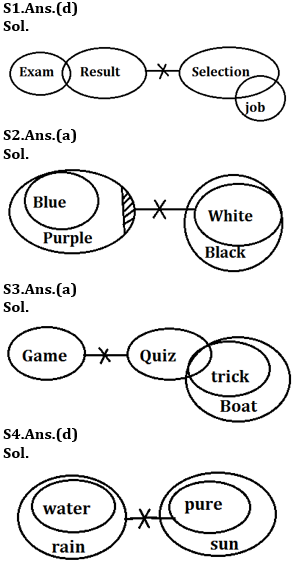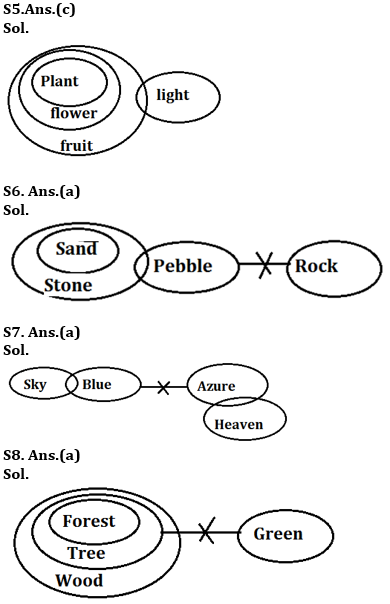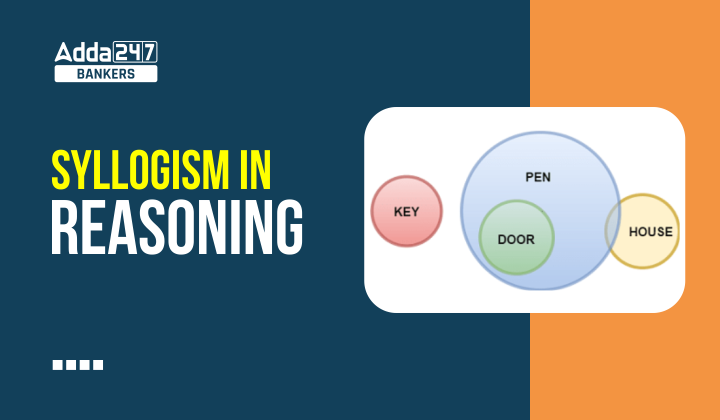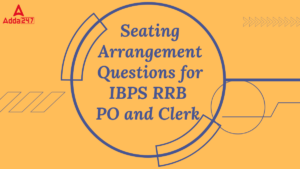Table of Contents
The syllogism is a crucial topic in the reasoning section, which holds significant importance in various competitive examinations. This particular topic carries substantial weightage in the reasoning section, rendering it indispensable for candidates preparing for these exams. Syllogism is a pivotal subject within the Reasoning section and is incorporated into numerous competitive examinations, including IBPS PO, IBPS Clerk, SBI PO, SBI Clerk, IBPS RRB, SSC CGL, SSC CHSL, Railways Group D, NTPC, and other exams.
The concept of Syllogism is relatively straightforward, designed to assess a candidate’s logical thinking capabilities. The entire topic revolves around specific keywords that candidates must comprehend thoroughly. Aspirants can leverage the Venn diagram as a visual aid to solve reasoning questions pertaining to syllogism. Mastering syllogism can enable candidates to effortlessly secure 4-5 marks in any examination. This article provides valuable insights, offering tips and tricks for tackling syllogism reasoning questions, as well as outlining certain associated rules. By gaining a comprehensive understanding of syllogism, candidates can significantly enhance their performance in competitive examinations.
What Is Syllogism?
The term “Syllogism” originates from the Greek language, where it was employed by Aristotle to signify a “Valid argument” or a logical inference. It is recommended that individuals refrain from making assumptions based on common beliefs, and instead adhere to the established rules designed to solve problems within this topic. A syllogism can be effectively solved by constructing a visual representation (Venn diagram) of the given statements and subsequently deriving the answers by following the depicted information. This visual representation is commonly referred to as a Venn diagram, which serves as a powerful tool for understanding and solving syllogistic problems.
Syllogism Reasoning Questions Tips and Rules
- When solving syllogism reasoning questions always form a Venn diagram to double-check your verbal reasoning. It is the most effective way of solving syllogism questions.
- In the syllogism question with two particular statements, no universal conclusion is possible.
- When solving the syllogism reasoning questions pay proper attention to words such as a few, at least, not, and all. These are the basics for understanding and solving such questions.
- In the syllogism reasoning questions with the two negative statements, no positive conclusion is possible. And same with the Positive statement with two positive statements no negative conclusion is possible.
- If a possible conclusion is true in any one of the possible Venn diagrams then the possibility is considered to be true.
Syllogism Reasoning Questions Tricks
Candidates who find difficulty in solving syllogism reasoning questions with the help of the Venn diagram can follow the short trick given in the table below.
| Short Code | Proposition | Quantity | Quality |
| A | All A are B | Universal | Affirmative |
| E | No A is B | Universal | Negative |
| I | Some A are B | Particular | Affirmative |
| O | Some A are not B | Particular | Negative |
In the table below candidates can check the results of the statements.
| Combination of statements | Result |
| A+A | A |
| A+E | E |
| E+A | O |
| E+I | O |
| I+A | I |
| I+E | O |
| E+E | No Conclusion |
| I+I | Can’t be determined |
Syllogism Reasoning Questions
In each question below are given some statements followed by some conclusions. You have to assume everything in the statements to be true even if they seem to be at variance with commonly known facts and then find out which of the two given conclusions logically follow from the statements, disregarding commonly known facts. We have also provided solutions of the given questions, but candidates first try to solve them by themselves.
Q1. Statements: Some selection are job.
Some exam are result.
No result is selection.
Conclusions:
I. Some exam are not selection.
II. All selection can be exam.
Q2. Statements: All Blue are Purple.
Some Purple are not White.
All White are Black.
Conclusions:
I. Some Purple are Blue.
II. Some White are not blue
Q3. Statements: No Game is a Quiz.
Some Quiz are Trick.
All Trick are Boat.
Conclusions:
I. Some trick are quiz
II. Some trick are not quiz
Q4. Statements: All water are Rain.
No Rain is Pure.
All Pure are Sun.
Conclusions:
I. No water are Pure.
II. Some Rain are water.
Q5. Statements: All Plant is Flower.
All flower are fruit.
Some fruit are light.
Conclusions:
I. No flower is light
II. Some flower are light
Q6. Statements:
Only a few stone are pebble.
No rock is pebble.
Only stone is sand.
Conclusions:
I. All rock are stone is a possibility.
II. All sand is pebble is a possibility.
(a) Only I follows
(b) Both I and II follow
(c) Only II follows
(d) None follows
(e) None of these
Q7. Statements:
Only a few sky is blue.
No blue are azure.
Some heaven are azure
Conclusions:
I. All heaven can never be blue.
II. All sky are azure is a possibility.
(a) Only I follows
(b) Both I and II follow
(c) Only II follows
(d) Either I or II follows
(e) None follows
Q8. Statements:
All forest are tree.
No tree is green.
All tree are wood.
Conclusions:
I. All forest are green is a possibility.
II. Some wood are not green.
(a) Only II follows
(b) Both I and II follow
(c) Only I follows
(d) Either I or II follows
(e) None follows





 GA Capsule for SBI Clerk Mains 2025, Dow...
GA Capsule for SBI Clerk Mains 2025, Dow...
 The Hindu Review October 2022: Download ...
The Hindu Review October 2022: Download ...
 Seating Arrangement Questions for IBPS R...
Seating Arrangement Questions for IBPS R...





